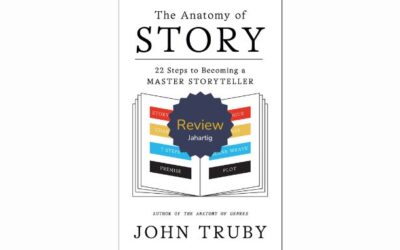Avatar. Main, central, or primary character. Hero. Protagonist. So many ways to describe the central figure in a story. I prefer to use the word protagonist because it separates the central figure from others in the story, prevents association with any paradigm of heroism, and distinguishes this term from any description of who they are (their character).
Inernal genre refers to what’s happening emotionally and relates to the way the protagonist changes during the story. Many people argue this is the crux of a story and the starting point for how a story is developed. While some external genres like action and horror often have no appreciable change in the main character (referred to as character arc), modern audiences prefer stories that do and inclusion of this often affects the appeal. Star Wars is a good example of an action story that has an internal character arc.
One difficulty as a new writer is sorting out the differences between ‘expert’ advice as they each seem to develop their own system. The overlap in nomenclature is often inconsistent both between and within these systems.
In Save the Cat! Writes a Novel, Brody suggests starting with a protagonist (hero)and giving them three things:
- A Problem (or flaw that needs fixing)
- A Want (or goal that the hero is pursuing externally)
- A Need (of life lesson to be learned)
This starting place is consistent with the work done by Angela Ackerman and Becca Puglisi (Writers Helping Writers) who focus on the protagonist’s wound or the ‘shard of glass’ used in the Story Grid method.
Story Grid Internal Genres
The Story Grid method doesn’t seem to start with the protagonist or how they change at first glance. Yet, Coyne states that the best stories have an internal genre. He also emphasizes that the plot points driven by the external genre are there to force the protagonist to learn the lessons needed in order to complete their character arc.
A good complementary guide to integrating the protagonist’s internal change into the story can be found in Weiland’s book Creating Character Arcs: The Masterful Author’s Guide to Uniting Story Structure (Helping Writers Become Authors).
Worldview
This is the most common internal genre used in the Hero’s Journey. It is the change in understanding or belief—about how they see the world. It is often a coming-of-age story where the protagonist matures, but this can occur at any age. Shawn has said Worldview is the value compass for how the avatar (character) sees the world. The negative side of this can be disillusionment.
Underlying question
How can we solve problems we don’t yet understand? How do we cope with events our existing belief structures cannot process?
Controlling Idea
Prescriptive: We gain new wisdom when we share our gifts with a multicolored and imperfect world that’s neither all or nothing.
Cautionary: We descend into meaninglessness when we fail to mature past a black-and-white view of the world.
Core Need
Self-actualize
Core (life) value change
Sophistication/Naivete; Ignorance/Wisdom
Core emotion experienced by the reader
Hope, Satisfaction, Loss or Pity
Core event in the story
Climactic moment when the protagonist chooses to accept the truth or not.
Examples
To Kill a Mockingbird by Harper Lee; The Catcher in the Rye by J.D. Salinger; 1984 by George Orwell; The Great Gatsby by F. Scott Fitzgerald; Lord of the Flies by William Golding; Pride and Prejudice by Jane Austen
Status
Change in social position. When the character rises or falls in social standing or status in their primary social group. A further distinction can be made based on the positioning of the protagonist and how they pursue the goal.
- Pathetic – weak protagonist tries to rise but falls instead
- Tragic – striving protagonist does something that dooms them to failure
- Sentimental – weak protagonist succeeds against all odds
- Admiration – the protagonist rises without compromising their principles
Underlying question
Will the protag be able to find satisfaction and achieve society’s definition of success, or will they discover and embrace their personal definition of success and stay true to their values? i.e. will they sell out?
Controlling Idea
Staying true to one’s own values, whether or not this leads to social betterment, defines success. But if one sells out – exchanging their values for meaningless rank, praise, or acquisitions – the result is failure.
Core Need
Respect
Core (life) value change
Success/ Failure
Core emotion experienced by the reader
Admiration, catharsis, relief, pity
Core event in the story
The climactic moment when the protagonist decides to do what’s necessary to attain success or reject the world they strived to join.
Examples
Jane Eyre by Charlotte Bronte; Gladiator; Rocky; Crazy Rich Asians;
Morality
How the protagonist behaves in the way they treat other people. In most instances, the question is are they selfish or altruistic. In the testing sub-genre the emphasis is on whether the principled protagonist stays strong to their values (they may waiver) or do they fail when tested.
Underlying question
When given a chance to behave selfishly or altruistically, which will the protagonist choose? Will they apply their unique gifts of knowledge, ability, and strength of will in service of only ourselves or others?
Controlling Idea
Prescriptive: We transcend our own selfishness when we share our gifts for the benefit of others.
Cautionary: We are damned when we selfishly withhold our gifts or use them solely for our own gain in the world.
Core Need
Self-transcendence
Core (life) value change
Altruism/ Selfishness
Core emotion experienced by the reader
Anguish, satisfaction, contempt
Core event in the story
The climactic moment when the protagonist chooses to sacrifice or not
Examples
A Christmas Carol by Dickens; For Whom the Bell Tolls by Hemmingway; Wall Street




0 Comments